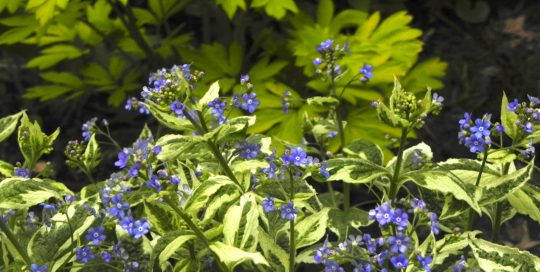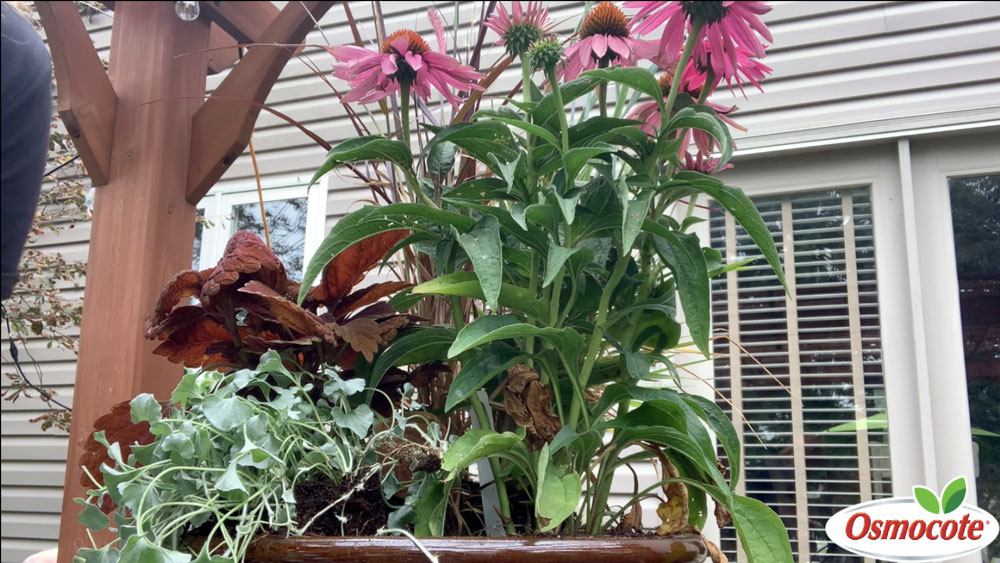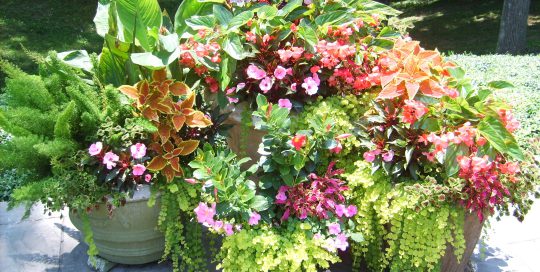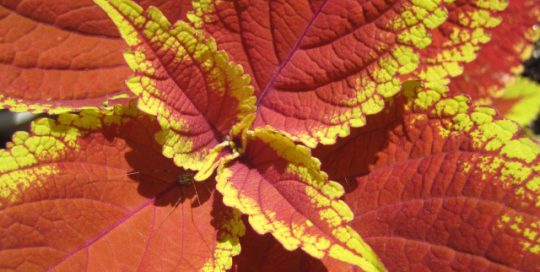There is nothing frivolous about coleus. It’s the perfect plant for gardeners and non-gardeners who love practicality. My mother, who liked coleus. was a “Depression baby” who re-used bread bags and aluminum foil. She never bought anything that wasn’t on sale, and would try a new brand or flavor because she “had a coupon for it.” She didn’t get teary-eyed over a bouquet of roses, but she’d ask my Dad and I to get coleus when we shopped for plants in the spring.
Coleus provided the best bang for the buck compared with Petunias, which would grow leggy by July, or geraniums, which require a bit of fussing. Mom liked the way coleus functioned as color guards that flanked the front porch all summer long. All they needed was an occasional watering — a good thing when you have seven kids to take care of.
Since those days, a lot has happened to plants in general, and coleus specifically. Sometime between the 1960s and the 21st century, breeders once again discovered the functional beauty of this Indonesian native. From upright to trailing, from vigorous to delicate, it goes with anything colors. Today coleus is a mainstay at any garden center.
What’s to love?
According to Ray Rogers in his book Coleus: Rainbow Foliage for Containers and Gardens, the most important quality of coleus is its easy-to-care-for nature. Ray’s book offers some insight into why that is so. In recent times it seems that coleus has been declared a sun-loving plant. When breeders went to work creating new coleus hybrids, they noticed some were more sun-tolerant than others. Factors that contribute to a coleus’ ability to thrive outside of a shady corner included leaf color and thickness, and soil moisture.
In general, Rogers says, darker-colored varieties tolerate more sun than paler ones, with yellow-leaved cultivars falling somewhere in the middle. All bets are off, however, if you decide to increase a plant’s sun exposure.
“Even normally sun-tolerant cultivars can burn when plants that are kept in a relatively low-light area are suddenly moved into brighter light,” Rogers warns.
Plant Care
It’s a good practice to leave a container in the shade for a couple of days after it’s been planted. Ideally, it should be moved gradually into more and more sun, all the while monitoring its moisture, especially if the weather is hot. And if you want to see what a coleus looks like in more shade, just look inside the plant where the sun doesn’t penetrate. I noticed that, with the cultivar called ‘Campfire’, the leaves growing just 10 inches below the stem tips could be from a different plant entirely. Leaves at the top of the plant were a rich, bright, and nearly solid orange, while those lower on the plant were a muted orange with an irregular chartreuse edging.
How Did Coleus Get Its Name?
There is some name confusion in the coleus world, but it’s nothing new. When Karl Blume discovered it in the wilds of Java and introduced it to English gardeners in 1853, it was called Coleus blumei in honor of Blume. It wasn’t until this century that it was placed into a different genetic category, and twice! The first name change was to Solenostemon scutellarioides. That didn’t last long. The plant now has a more easily pronounced name, Plectranthus (Pleck-TRAN’-thus). Houseplant aficionados may recognize that as the botanical name for Swedish ivy. Because it could be decades (if at all) before gardeners start referring to the plant as Plectranthus, most people will continue to call it coleus.









